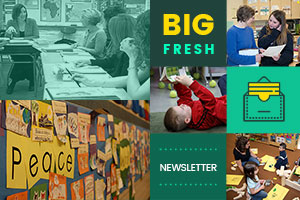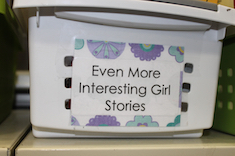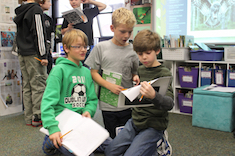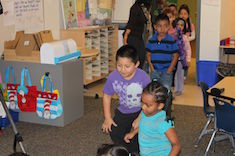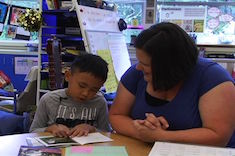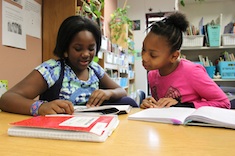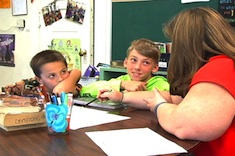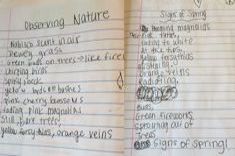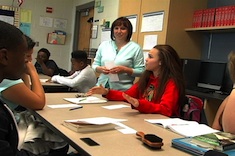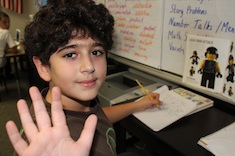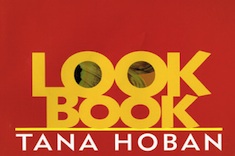Library
Choice Literacy Articles & Videos
The Choice Literacy library contains over 3,000 articles and 900 videos from 150+ contributors. Classic Classroom and Literacy Leadership subscribers have access to the entire library. Content is updated continuously, with five to six new features published each week.
Latest Content
The Big Fresh November 19, 2016 Move It
Reaching boy and girl learners is the focus of this week’s Big Fresh.
No More Strong Girls?
Are there ways for girls in literature to be heroic without fighting? Shari Frost asks herself this question in compiling her latest booklist.
Recess of the Mind
Scott Jones explains how thinking outside the normal time frame for writing instruction helped him reach boy writers.
Branding Blogs (Part 3)
Andrea Smith concludes her series on the power of branded student blogs in her fourth-grade classroom.
Branding Blogs (Part 2)
Andrea Smith continues her series on the power of "branding" for improving student blogs. In this installment, students examine mentor blogs and bloggers.
Parent in a Foreign Land
Jennifer Schwanke shares some of the unique struggles parents of English language learners have in making their children's needs known, and how we can help them.
The Big Fresh November 12, 2016 A Hand to Hold
We look at parents and families in this week’s Big Fresh.
Environment and English Language Learners
Stella Villalba finds English language learners struggle less when teachers understand what adaptations are needed in the classroom environment.
Best First Drafts
Ruth Ayres confers with fourth grader Nicole and reinforces advice from her mom about capitalizing proper nouns, as well as the importance of applying what you know about conventions in first drafts.
The Big Fresh November 5, 2016 What’s for Sale
We look at student blogging in this week’s Big Fresh.
Picture Walks for Comprehension: Conferring with Dylan
Katrina Edwards confers with first grader Dylan, teaching this young English language learner the value of picture walks for comprehension.
Branding Blogs (Part 1)
Andrea Smith finds "branding" is a way to improve student blogs. She shares her process of presenting the concept to students in the first installment of a three-part series.
The Importance of Audience
Julie Johnson demonstrates how teachers can help students think through issues of audience during writing workshops.
The Craft of Blogging
Franki Sibberson uses a micro-progression of her own draft of a blog post to help her third graders improve their blogging skills.
The Big Fresh October 29, 2016 Kindness
We look at conferring in this week’s Big Fresh.
Top 10 Conferring Tips
Ruth Ayres gives her best advice for honing your conferring skills with this succinct list of tips for better conferences.
The Power of Group Conferences in Fifth Grade
Katherine Sokolowski explains why group conferences can be a powerful tool for building a reading community. The article includes a video of a group conference in her fifth-grade classroom.
Student-Led Conferences from Many Perspectives
Jennifer Schwanke and Franki Sibberson share four perspectives on student-led conferences — teacher, principal, student, and parent.
The Big Fresh October 22, 2016 Talking Is Not Teaching
We look at options for poetry throughout the year in this week’s Big Fresh.
Not Just in April: Poetry All Year Long
Tara Smith finds that the 20 minutes she spends on poetry reading, analysis, and response in her sixth-grade classroom each week pay dividends all year long.
Random Poetry
Gretchen Schroeder finds creative ways to pique interest in poetry in her high school classroom.
Previewing a Book with Zoe
Andrea Smith uses a reading conference with fourth grader Zoe to preview a book.
Poetry Through Song
Jennifer Schwanke finds song lyrics are one way for students to see the power of poems.
“Old Age Sticks”: Poetry Analysis in Eighth Grade
Christy Rush-Levine leads her middle school students in a choral reading and analysis of “Old Age Sticks” by E. E. Cummings. This is the first installment in a two-part series.
The Big Fresh October 15, 2016 Family Run
We look at stamina in young learners in this week’s Big Fresh.
The Importance of Their Words
Melanie Meehan shares strategies and prompts for helping easily distracted young learners focus in conferences.
The Big Fresh October 8, 2016 Riding the Waves
We look at classroom management in this week’s Big Fresh.
Bad Days in Workshops
Franki Sibberson realizes there are some bad days in literacy workshops that hold no great life lessons for teachers and students, and that is okay.
Playful Texts for Beginning Readers
Shari Frost uses playful texts to increase interest and stamina in emergent readers. She shares many of her favorites in this booklist.
Class Discussion: Is Stealing Okay?
Is bad behavior ever okay? Author Jennifer Richards Jacob asks this question of a class of fourth graders who have read her novel Small as an Elephant.
Browse Content By
Type
Category
- Assessment Tools
- Big Fresh Archives
- Booklists
- Choice Numeracy
- Classroom Design
- Common Core
- Community Building
- Conferring
- Content Literacy
- Digital Literacy
- English Language Learners
- Equity
- Family Relations
- Free Samples
- Guiding Groups
- Leadership
- Literacy Coaches
- Mentor Texts
- Minilessons
- New Teacher Mentors
- Podcasts
- Poetry
- Quote Collections
- Reading Strategies
- Self Care
- Struggling and Striving Learners
- Talking and Listening
- Teacher Study Groups
- Teaching Reading
- Teaching Writing
- Word Study and Vocabulary
Author
- Melissa Quimby
- Nawal Qarooni
- Gwen Blumberg
- Julie Cox
- The Lead Learners
- Hannah Tills
- Josie Stewart
- Ruth Metcalfe
- Mallory Messenger
- Becca Burk
- Jodie Bailey
- Vivian Chen
- Mary Brower
- Tiffany Abbott Fuller
- Stephanie Affinito
- Ruth Ayres
- Leigh Anne Eck
- Heather Fisher
- Shari Frost
- Julie Johnson
- Suzy Kaback
- Gigi McAllister
- Shirl McPhillips
- Melanie Meehan
- Cathy Mere
- Debbie Miller
- Tara Barnett and Kate Mills
- Tammy Mulligan
- Dana Murphy
- Bitsy Parks
- David Pittman
- Brenda Power
- Heather Rader
- Matt Renwick
- Mandy Robek
- Christy Rush-Levine
- Gretchen Schroeder
- Jen Schwanke
- Brian Sepe
- Katherine Sokolowski
- Stella Villalba
- Jennifer Vincent
Grade Level
Choice Literacy Membership
Articles
Get full access to all Choice Literacy article content
Videos
Get full access to all Choice Literacy video content
Courses
Access Choice Literacy course curriculum and training

